How to shuck it

Roula Khalaf, Editor of the FT, selects her favourite stories in this weekly newsletter.
My first job in New York was at an old French bistro where I often had to work the oyster-shucking station. There was a guy, Ezekiel, much older than me and a longtime employee, who showed me the ropes. Eze, as we called him, could shuck oysters faster than should be humanly possible. I remember on one busy Saturday, Eze and I had been working the station together, and he had shucked 180 oysters to my meagre 60. And I wasn’t half bad.
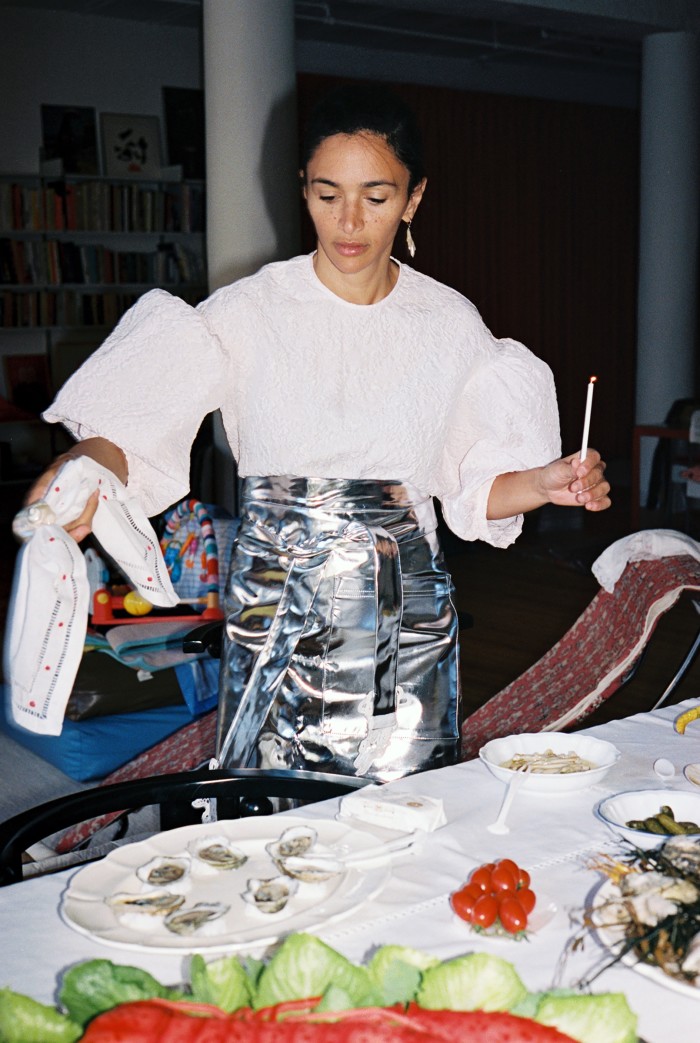
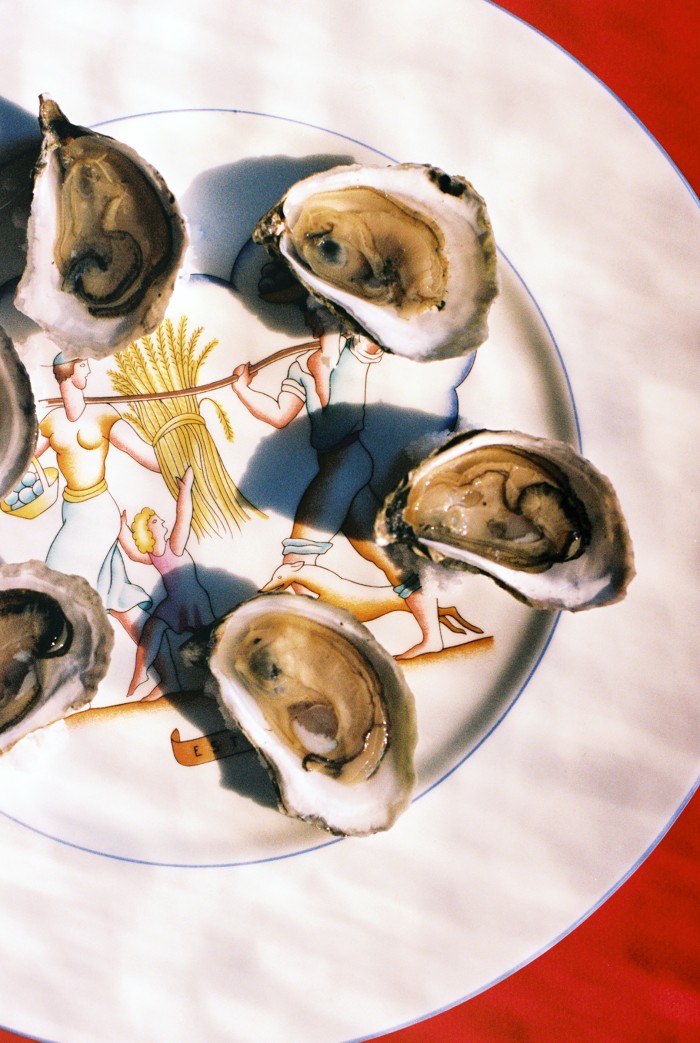
These days I don’t have to worry about a slammed dinner service, but the skill still comes in handy during the holiday season. People are often intimidated by oyster shucking if they’ve never done it before. But with a little bit of practice it’s a skill one can easily acquire. And as the saying goes: “Give a man a fish, and you feed him for a day; teach a man to fish and you feed him for a lifetime.”
While this isn’t exactly fishing, if you can get the knack, you’ll always have the option of an oyster-shucking party up your sleeve. Guests are so impressed by my shucking skills, which, in all honestly, I do love showing off. It’s one of my favourite party tricks to fall back on. With an oyster party, very little cooking is required, and there is something very festive, indulgent and sexy about them. The key is to be generous and buy more than you think people will eat. I like to account for about 16 to 20 oysters per person if oysters are the main course. They will end up being eaten. At restaurants we’re often choosing between half a dozen and a dozen, but when you’re at home and once you can shuck, you can really indulge in a boatload of them.
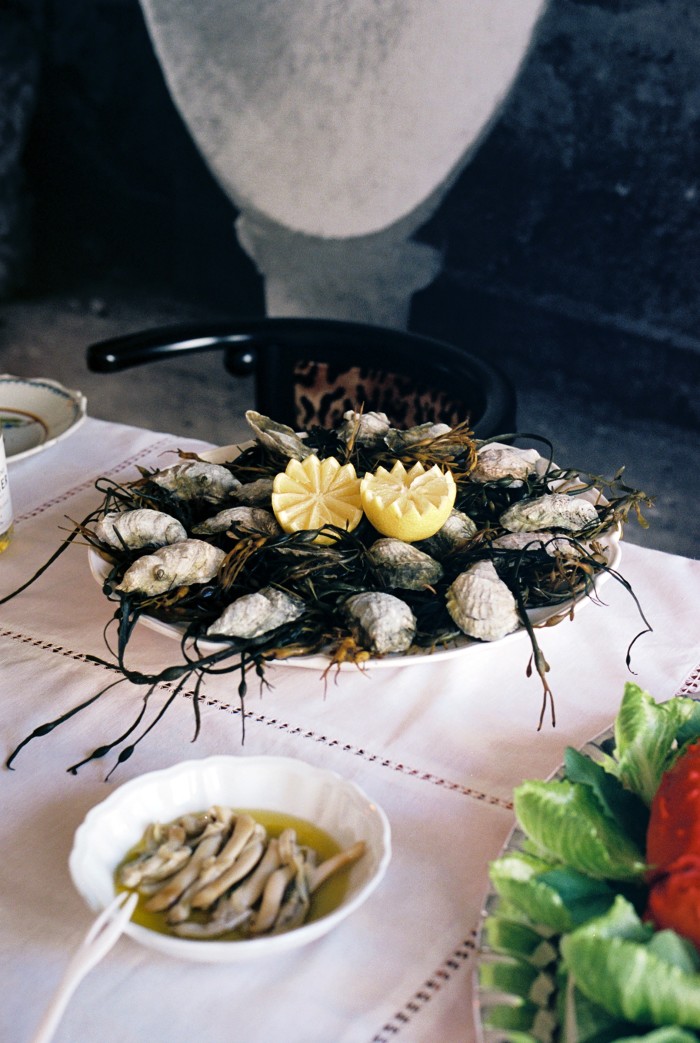
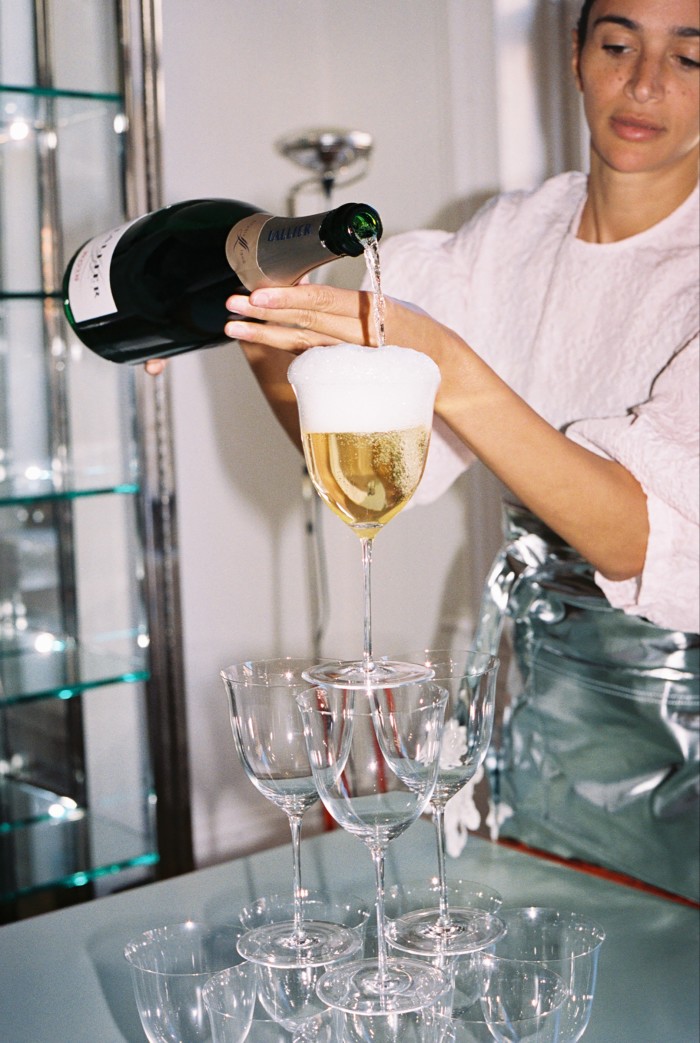
Oyster season goes from September to April, when the water is cold. I’ve always heard that oysters are best in months that have the letter “r” in them. Say it in your head and you’ll see it’s basically all year except summer, when the waters are warm. There are wild oysters and farmed oysters. One is not superior to the other. Unlike many other types of fisheries, oyster farms are sustainable and good for the environment. Most have very little environmental impact, and actually help remove pollution from waterways and promote sea grass and reef growth. An oyster’s flavour, or “merroir”, is dependent on the body of water it comes from, similar to a wine’s terroir. The water’s salinity affects the oysters, as does the amount of time they spend in the water.
How to shuck it: Laila Gohar’s easy guide
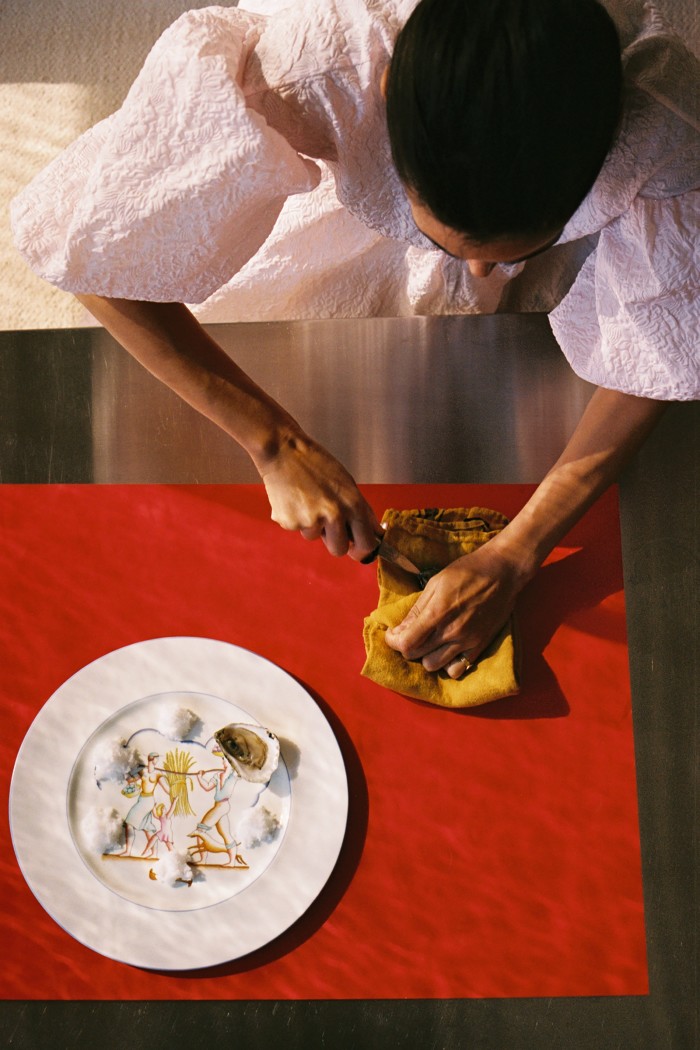
Always clean your oysters with cold running water to remove dirt or debris. Also remember to protect your hands either by wearing a shucking glove or by using a folded kitchen towel. This will provide a firm grip and minimise the risk of injury.
1 Place the oyster flat-side down onto a kitchen towel that you have folded several times into a square, then fold one layer of towel on top of the oyster.
2 Place your left palm (if you’re right-handed) firmly over the top of the oyster and towel. Locate the hinge: hold the oyster with the flat side down and the hinge pointing towards you.
3 Insert an oyster shucking knife near the hinge. Apply gentle pressure and twist the knife to pry open the shell.
4 Once it is slightly open, run the knife along the top shell to separate it from the bottom shell.
5 Slide the knife under the hinge to detach it from the bottom shell. Ensure the oyster remains intact in its liquor (the natural juices inside the shell). Make sure not to lose that liquid.
6 Check for any shell fragments or grit and gently remove them with the knife or a small brush.
In the UK, well-known oyster beds lie around Kent, Essex, Dorset, Devon and Cornwall as well as off the west of Ireland and Scotland. In the US oysters are harvested on both the Atlantic and Pacific coasts, but especially in Maine, Massachusetts, Washington, and California. My favourite oysters come from Duxbury Bay, Massachusetts, from a farm called Island Creek Oysters. The cold, salty waters result in oysters that are briny, crisp and firm – basically everything I want an oyster to be. While the farm sells several varieties of oysters, I go for the flagship Island Creek Oyster. Some fisheries, including Island Creek, have an online delivery service that ships fresh oysters to your doorstep overnight.
Once you’ve sorted out where your oysters are coming from, it’s time to get shucking. The only tools you need are a kitchen towel and a shucking knife (see above for my how-to guide).
Use common sense when shucking. If an oyster smells off, toss it. It’s never worth the risk. If you open up the oyster and it looks dry, or just different to the rest – maybe a little more brown, or warm to the touch – toss it. Good oysters are plump, glossy and sit in their own liquid.
I like to serve oysters on a large platter with little mounds of salt to allow them to nestle and sit up. Just mix regular coarse salt with the tiniest bit of water until you have a damp sand texture. Make small mounds on the plate and place each shucked oyster on top of the mound. Personally, I am an oyster purist and don’t care much for the traditional accompaniments such as mignonette and horseradish, but I will quickly make a mignonette to appease guests. One thing I always recommend, though, is to try the first oyster without anything on it so you can really taste the sea.
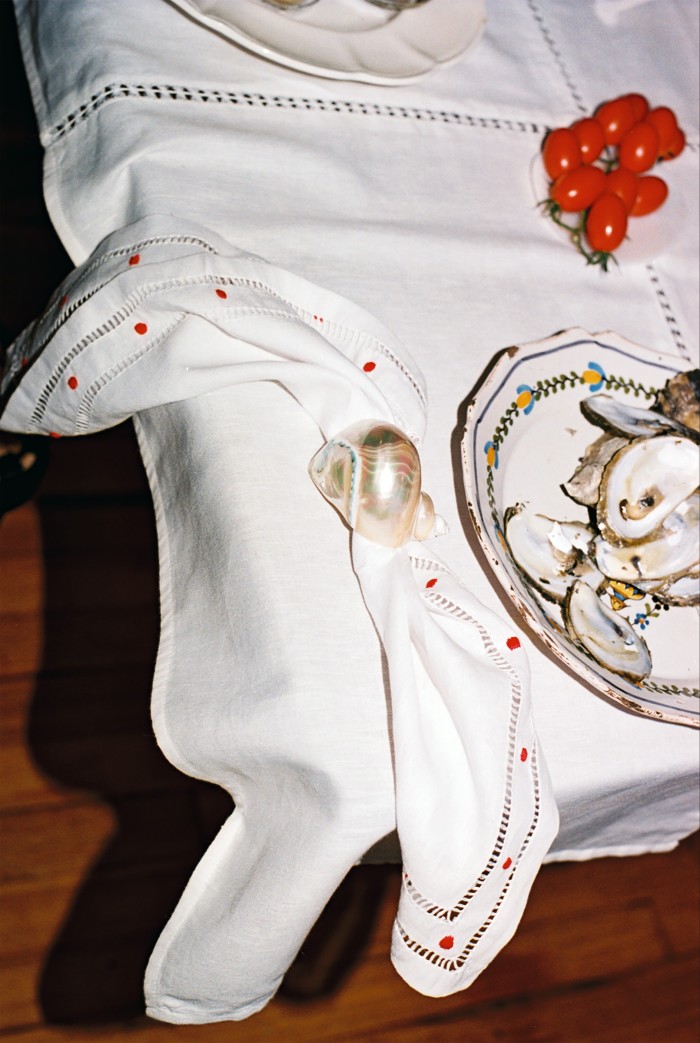
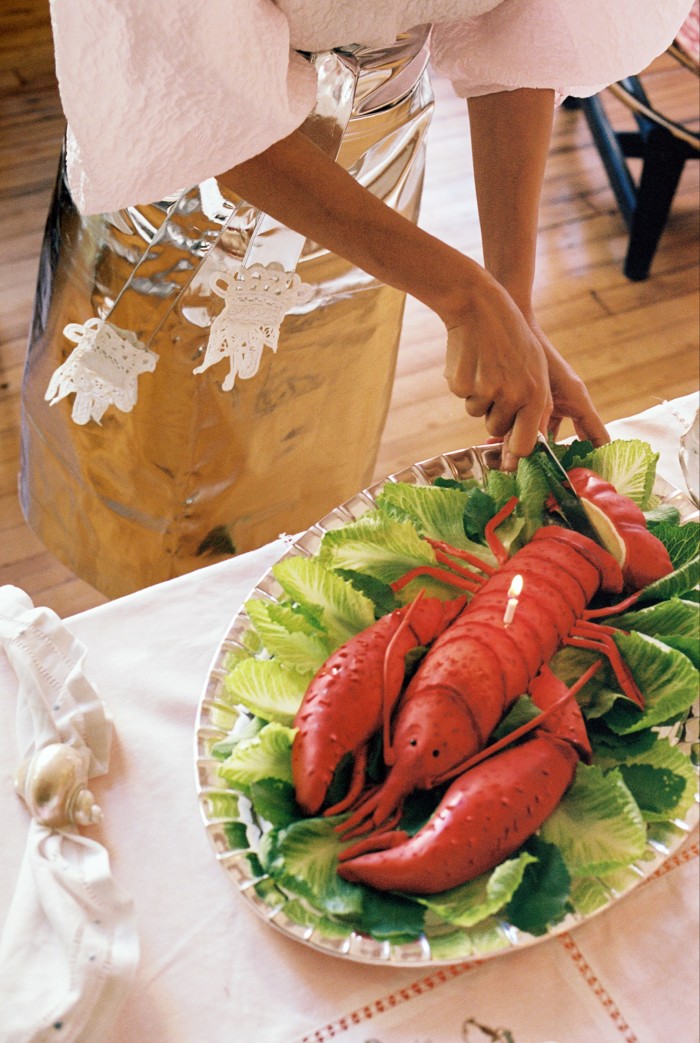
An oyster party is incomplete without champagne, and there is no better time for a champagne tower than the holidays. I enjoy discovering small champagne producers and digging up bottles that I have come across and loved. But my favourite champagne that is widely available is Lallier Blanc de Blancs: it’s dry, full-bodied and extremely crisp. It is cultivated with Chardonnay grapes from two grand cru regions: Aÿ and the Côtes des Blancs. The blend is citrusy and mineral, which gives it this pleasant, pure and fresh feel that has your mouth begging for the salinity of a perfect oyster. While oysters and champagne were the main acts in my holiday party, I had a few supporting characters such as razor clams, steamed lobster served with homemade mayo and, for dessert, an orange blossom cake made to look exactly like a lobster which I stuck a candle in to confuse (and delight) guests. So much of my work is about that sense of wonder, but I still remain true to my beginnings as a 21-year-old girl learning to shuck oysters in a dingy French bistro in New York’s Meatpacking District.
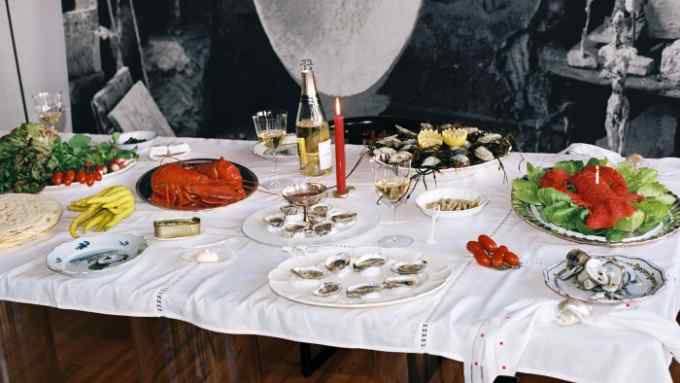
Comments